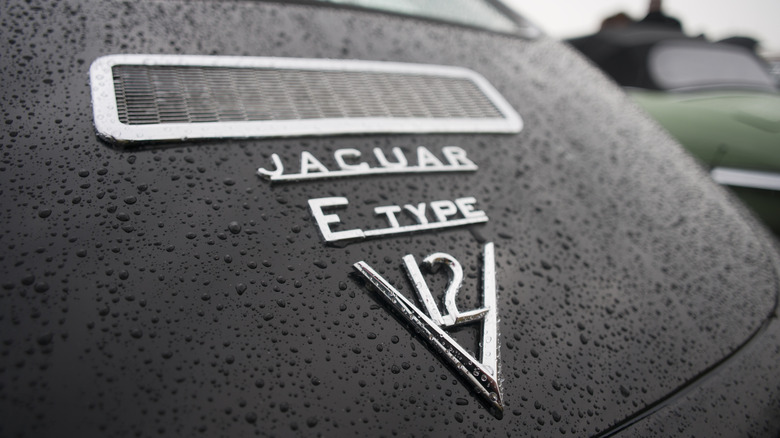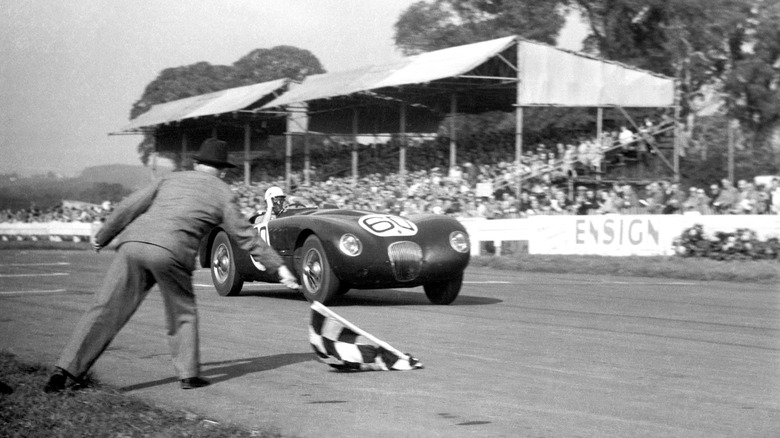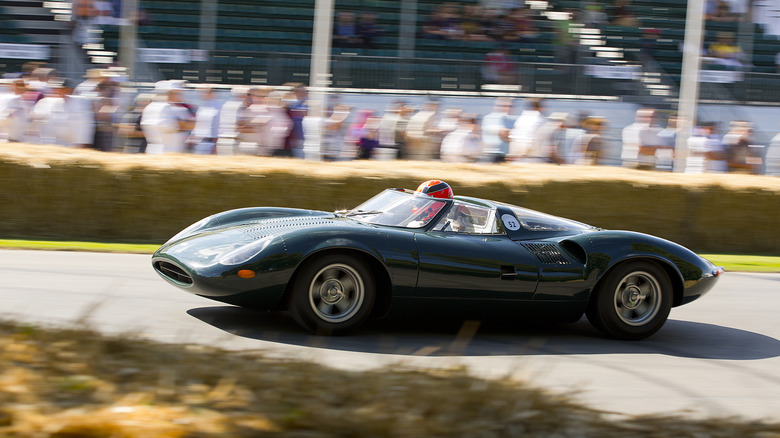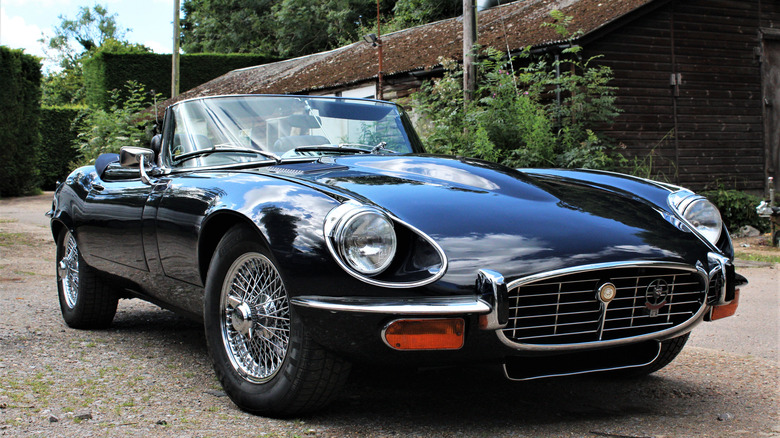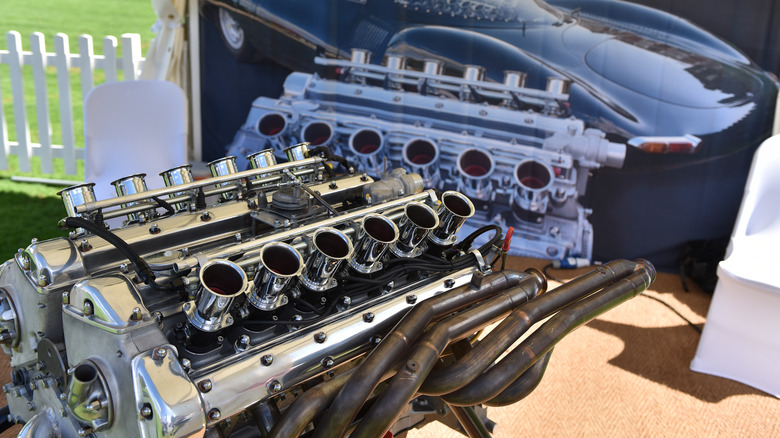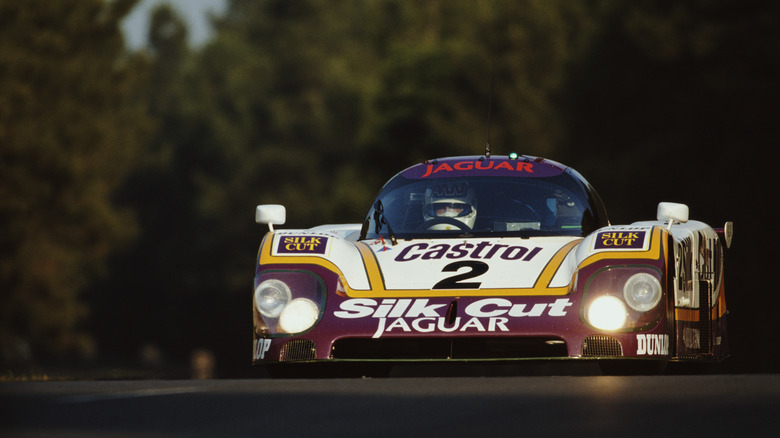Here's What Made Jaguar's V12 So Special
Ferrari has its Colombo V12, Porsche has its air-cooled flat-six, and Bentley has its W12. Although they aren't all around today, each of these engines is inextricably linked to the manufacturer it came from. For Jaguar, it's the V12.
Born in 1971, the Jaguar V12 can trace its roots back to motorsport — as all great engines should — and remained in production until 1997.
Through its long life, the production version of the Jaguar V12 grew in capacity from 5.3 to 6.0 liters, before going racing and expanding all the way to 7.4 liters. During the years it appeared in the iconic E-Type and XJS, as well as the XJ12 sedan and related Daimler Double-Six, and even the XJ220 concept car before that particular project switched to a V6.
Its racing exploits saw the V12 used by Jaguar's official team, called Tom Walkinshaw Racing, and powered the Le Mans winning XJR-9 of 1988. It later appeared in the XJR12 and the Lister Storm, a car related to the Jaguar XJS, and was even used to power a replica Spitfire aircraft. In turbocharged form, it produced over 1,000 hp and was used for powerboat racing.
Jaguar wasn't a fan of the V8
Although the V8 was adored by the US, it wasn't the engine of choice when Jaguar looked to expand its lineup. The company began looking into V12 options as far back as 1951, to be produced alongside its straight-six motor, called the XK.
The Jaguar Heritage Trust quotes Walter Hassan of the XK design team as saying: "The bank-to-bank firing sequence [of a V8] imposes severe limitations upon the achievement of an efficient induction system if carburettors are used. A V8 needs a two-plane crankshaft with wide outer crankshaft balance weights to eliminate its out-of-balance couple."
Having already produced a six-cylinder engine, the logical step was for Jaguar to mate a pair together into a 60-degree 'V' formation and share a crankshaft. Work on such an engine began in 1952, but the engine's double overhead camshaft (DOHC) arrangement made the V12 too wide.
Development on the V12 was paused and Jaguar instead began work on a 9.25-liter V8 for the British military, to power tanks and their transporters. For its cars, Jaguar stuck with the tried-and-tested straight six that had already won Le Mans in a C-Type, pictured above, and was to go into the upcoming D-Type. There was simply no need (or sufficient financial resources) for a V12.
A V12 intended to race at Le Mans
Fast-forward to the mid-1960s and Jaguar returns to its plans for a V12. This time, it was intended to power a mid-engined prototype race car called the XJ13, pictured above.
Jaguar hoped to rival Ferrari and Ford with its new car, but when the latter produced an uprated, 7.0-liter version of its Le Mans-winning GT40, Jaguar realized the 5.0-liter XJ13 would not be competitive.
Instead of working on a fix, the car was put into storage — but only after setting the UK record for the highest average speed for a lap of a race track, reaching 161.6 mph at the banked bowl of the MIRA test facility. The record stood for 32 years until it was beaten by a 168 mph average set by the McLaren F1.
The mothballed XJ13 gave Jaguar the knowledge it needed to continue developing its first V12 engine. With its eyes set on a smooth-running motor perfect for luxury cars instead of racers, Jaguar increased capacity to 5.3 liters — a modification described by the Jaguar Heritage Trust as one that "greatly improved performance at low-mid-engine speeds, which was desirable in a Jaguar luxury car."
The V12 E-Type is born
Jaguar's first V12 engine was ready for production in 1971, but the company had no new cars for it. The engine was supposed to have launched with the XJ6 of 1968. But it missed that deadline, and now that it was ready Jaguar's upcoming XJ-S sports car was still some time away. Instead, the decision was made to slot the new V12 into the existing 2+2 series three Jaguar E-Type, which had a longer wheelbase to accommodate a pair of small rear seats, and which now also meant the big new engine would fit beneath the hood.
As an aside, the one-and-only XJ13 mentioned earlier was brought out of storage in 1971 to take part in a video promoting the new V12-powered E-Type. Unfortunately, the car crashed after filming and was badly damaged, but driver Norman Dewis was miraculously uninjured. The car was restored by Jaguar the following year.
Finally, Jaguar could present its V12 to the world, and what made the engine so special became clear.
Why the Jaguar V12 was unlike any other
Until now, V12 engines were offered only in small quantities by the likes of Ferrari and Lamborghini, whose hand-built motors sat in expensive and exotic cars occupying an entirely different sector of the market to Jaguar's more affordable cars.
Jaguar's new engine was the first to use lightweight aluminum alloys for the cylinder block, instead of the cast iron used by others. Aluminum was also used for the cylinder heads and pistons, helping to reduce weight and therefore improve performance.
The British firm said at the time how the engine's inherent design would make it relatively easy to produce V12 motors of larger or smaller capacity, should future cars require it. It was even claimed that the engine had so much torque, drivers could select fourth gear, pull away from standstill and reach the car's maximum speed of 146 mph without changing gear.
The V12 found a home under the hood of the XJ12 luxury sedan, and later the XJ-S which acted as a successor to the iconic E-Type. The engine went on to appear in the Daimler Double Six, before gaining a new cylinder head design and improved fuel efficiency for the XJ12 HE of 1981.
Jaguar's V12 finally goes racing
With further modifications, the V12 appeared in the Jaguar XJR-6 race car of 1985. It grew from 6.2 to 6.3 liters, before expanding again to 7.0 liters for the XJR-9, pictured above, which won six races in the 1988 season, including the 24 hours of Le Mans.
XJR-9 cars were later upgraded to a new XJR-12 specification for the 1990 and 1991 seasons of the World Sportscar Championship, with one example finishing second at Le Mans in 1991. Weighing just 900kg (1,900 lbs), the XJ-12's 7.0-liter Jaguar V12 produced 720 horsepower and reached 229 mph on the Le Mans circuit's Mulsanne straight.
Racing driver Gary Pearson explained to Goodwood Road & Racing in 2020 how the V12 engine helps with the XJR-12's downforce. "The way the rear end works with the full ground effect, I think the V engine gave itself to that a lot better than the Porsche did, which was the main contemporary at the time through '87, '88...With the flat-six engine on the Porsches, you couldn't get the depth of the tunnels where they start at the rear of the main bulkhead. So with the shape of [the] V engine with the ground effect of the Jaguar, it created much better downforce which gave it the edge".
The V12 later appeared in the Lister Storm supercar of the early-90s and continued to be used across the Jaguar range until it bowed out with the 6.0-liter XJ6 of 1997.
